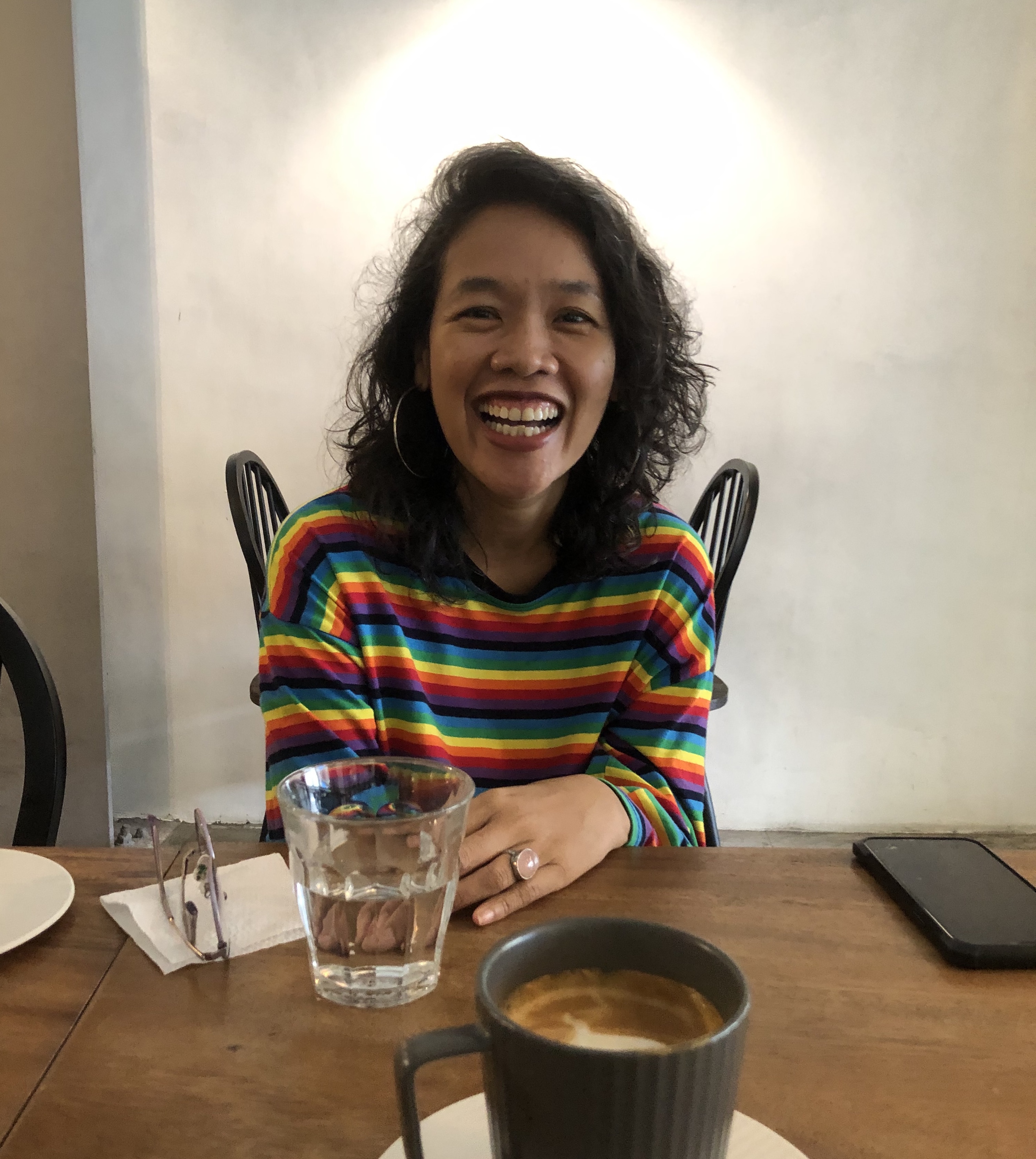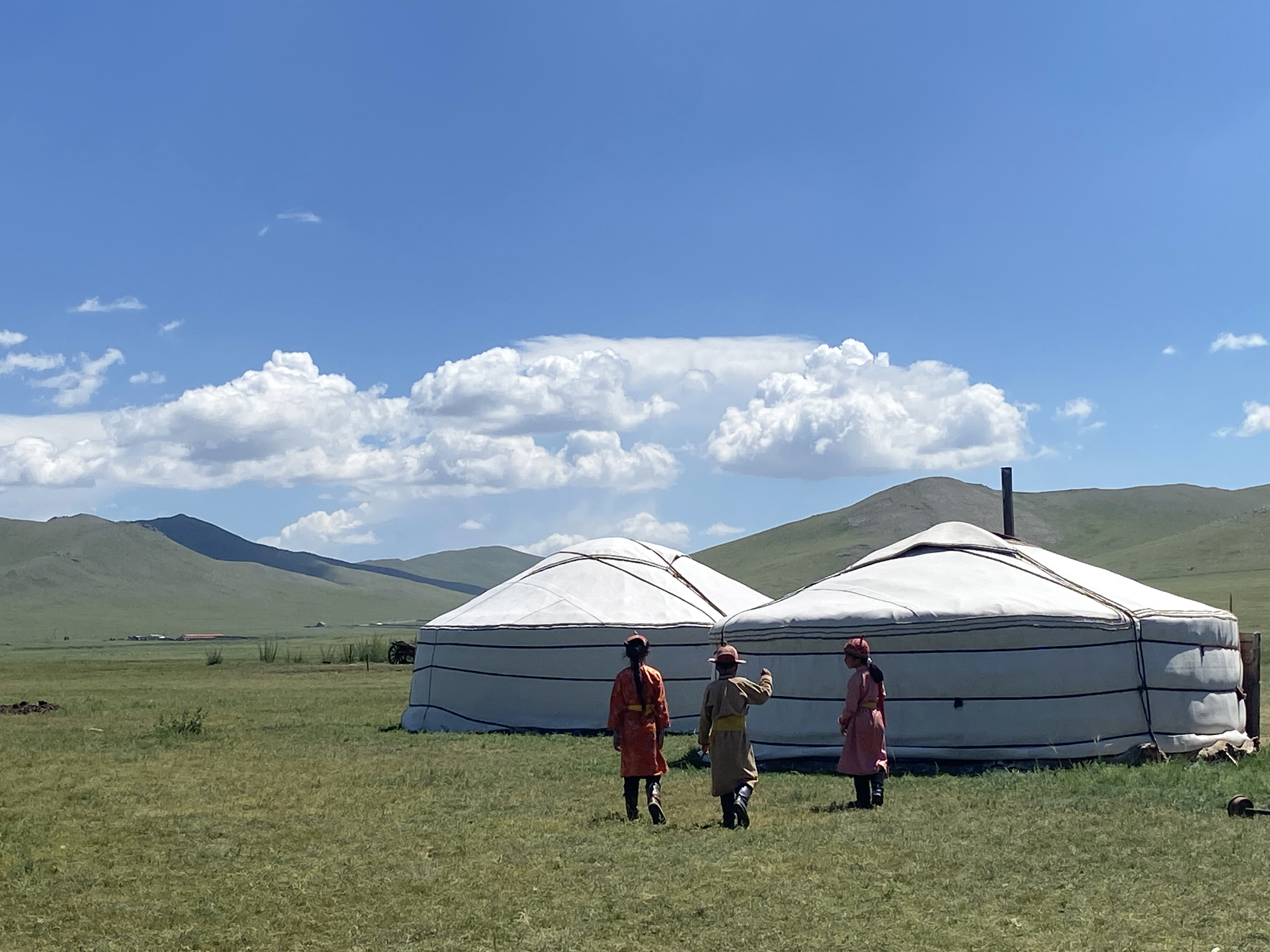Amidst greying hair, Jazel Kristin is dressed like a pinata Waldo: rainbow palette painting an oversized sweater and knee-length socks. I’m late, and Jazel is halfway through her coffee, sketchpad open in a third wave cafe. “Manila traffic,” I begin to mouth, realizing it’s a weak excuse. But she greets me jovially, only understanding and humor in her eyes.
- - -
“I usually introduce myself like this: ‘I’m a visual artist and documentary filmmaker,’ but it doesn’t have to be like that!” Jazel muses.
“They’re one and the same, all the work I do is an act of storytelling,” be it her day job or a passion project. “I used to think these were parallel words,” she says in a mix of English and Filipino, before concluding that “it’s one. It’s all one and the same.”
Enlightenment may seem like an esoteric concept, but it is actually practical and experiential. It points to the momentary dissolution of one’s sense of separation—the ego—resulting in a new perspective and hopefully, a change in life approach.
This has been talked about—demystified—by contemporary practitioner-philosophers like Thich Nhat Hanh and Eckhart Tolle but also, in essence, by psychologists and artists, from Carl Jung’s shadow integration to William Blake’s “world in a grain of sand.” Filipino scholars like Fr. Jaime Bulatao, a pioneer of Filipino Psychology and Vincenz Serrano (The Collapse of What Separates Us) also describe this.
Since formally starting her art practice in 2005 and meditation practice around 2015, Jazel now believes that she’s tied all her life experiences together towards a new mission—hair greying but with a smile more youthful than a teen’s. While modesty prevents her from declaring it, one might say that this is the enlightenment of Jazel Kristin.
The Zen tradition has had a profound impact on the aesthetics and sensibilities of various Asian societies, such as Korea, Vietnam, China, and Japan. This is seen in landscaping, architecture, the tea ceremony, culinary techniques and presentation, visual art, literature, martial arts, and even political philosophy.
Despite popular, even stereotypical, associations of Zen with the regions above, this offshoot of Buddhism has actually strewn its seeds in Western societies as well as in more parts of Southeast Asia in the 20th century thanks to globalization and resultant cosmopolitan attitudes.
Since the 1970s, zendo, or Zen meditation halls and Zen groups have sprung up around the Philippines, interestingly spearheaded by Catholic nuns and a few priests, in part thanks to the Second Vatican Council’s directives towards interfaith dialogue.
Presently, there are zendo in Baguio, Metro Manila, Ilo-ilo, and Davao, all hailing from the San-bo school of Japanese Zen. It was in one of these that Jazel has been training for 9 years.
One could describe the intermedia artist as cut from the same cloth as Yayoi Kusama or Jellyfish Kisses, comfortable in her existence, eccentric flairs ablaze, a social butterfly with nothing to prove.
Jazel earned her childlike wonder a-la philosopher Paul Ricoeur’s second naiveté. She’s seen a lot: the inequity and impunity perpetuated by institutionalized greed, the impacts of geopolitical aggression on fish yield, hunger, a child’s future. She’s earned her salt and run the rounds, training under contemporary Philippine journalism pillars like Howie Severino.
It seems Jazel takes after her Zen teacher, Sister Sonia Punzalan, a Cenacle nun, who also worked with the urban poor and towards the end of Martial Law and volunteered to protect the ballots. At 80-plus years old, Punzalan continues to minister to the widows and orphans of slain drug war suspects, yet still manages to laugh with a sparrow hopping in the yard.
Jazel’s works have travelled between shows and residencies, bleeding into and informing each other.
In 2010, at her first-ever residency in Paris, she cut up postcards of the works of Basquiat, Van Gogh, Matisse in order to re-contextualize them. During this time, the thought one must go far in order to return crossed her mind, together with a nudge that “this might one day be a show.”
During the 2021 leg of a residency in Casa San Miguel, Zambales which started in 2013, Jazel held a workshop with the residents of a nearby fishing village where the overarching question was “what are you thankful for?” The locals responded by making Mexican-inspired aluminum sheet milagros.
In 2022’s “The Great Takeover,” an exhibition culminating her Koganecho artist residency, Jazel reinvented the space in a configuration that was initially controversial, given its unconventional use of space (think, hanging at an awkward angle at a busy street) but gradually welcomed, while also cutting up and collaging photos. “I like how you see my home,” a local who viewed the show told her.
Her most recent residency was held last August 2024 at B-Contemporary in Ulaanbaatar through an invitation by Mongolian artist Nandin Erdene Budzagd, who she met in the 2017 Asian Women Artists group show in Jeonju, South Korea. B-contemporary just launched its residency program, and Jazel counts as one of its first-ever participants.
Aside from holding a workshop in the city, she also spent significant time with the country’s herder-nomads, traversing the Gobi Desert and grassy, windswept steppes with eye-level clouds.
Here, she was fascinated by their ger tents, white on the outside, but with complex, colorful, and intricate designs inside, often capable of housing up to 15 people at time. Ger are usually built around the furniture, rather than the furniture being brought in after the tents are set up; ger take under 3 hours to fix and an hour to dismantle.
With only two weeks to create a work in her one-month residency, the easier choice was to bring the finished postcards and milagros from previous residencies.
“Something,” however, “would be lost,” Jazel shares. For her, the process was more important than the product: Not just the process of creating a work, but the process of working with the audience, the process of a workshop. “I wanted to see how I’d be affected by the locale, by the people I’d meet,” Jazel tells the author.
Upon returning from the steppes, Jazel set to work in B-contemporary. With locals, she would hold workshops which could be seen as mini-retreats. Like with the Zambales fishing village, she led the participants through prompts that helped them reflect on their life experiences, which they turned into milagros.
These then were displayed around the gallery, together with works from her Paris, Zambales, Japan, and other residencies. “All the ideas I carried inside of me, all the experiences, I finally was able to tie it all here,” Jazel shares in Filipino.
And while she found resonances between Filipino and Mongolian humor and resilience, likening it all to the deceptive outward simplicity of a ger, “one month wasn’t enough. I didn’t really have time to get to know Mongolia, but I got to know myself. I found my power. My existence as an artist was validated. It was so life-affirming!”
- - -
Jazel has long finished her coffee, and throughout our chat I had to gesture for repeated water refills. Today is a slow day for her: laundry, errands, evening socializing, a perfect day to let things simmer, to let the ingredients of her next heart-work steep and flavor the broth.
We split the bill. “I love you Mongolia!” she beams, the punchline ready, “with all my he-art!”




